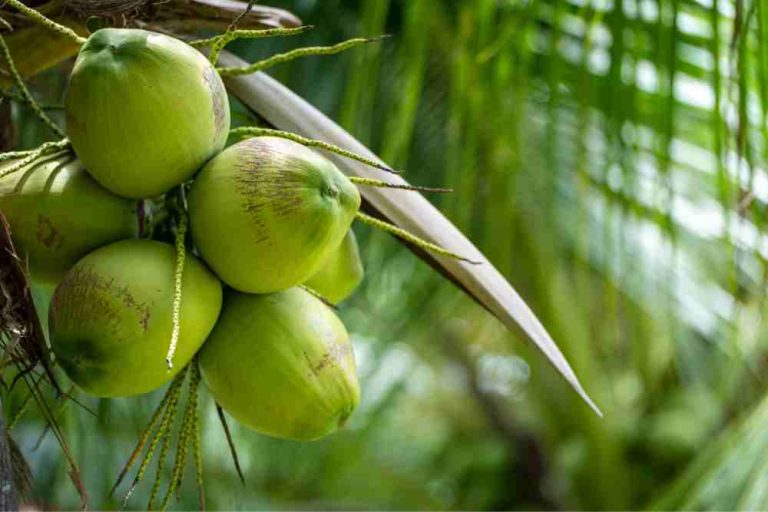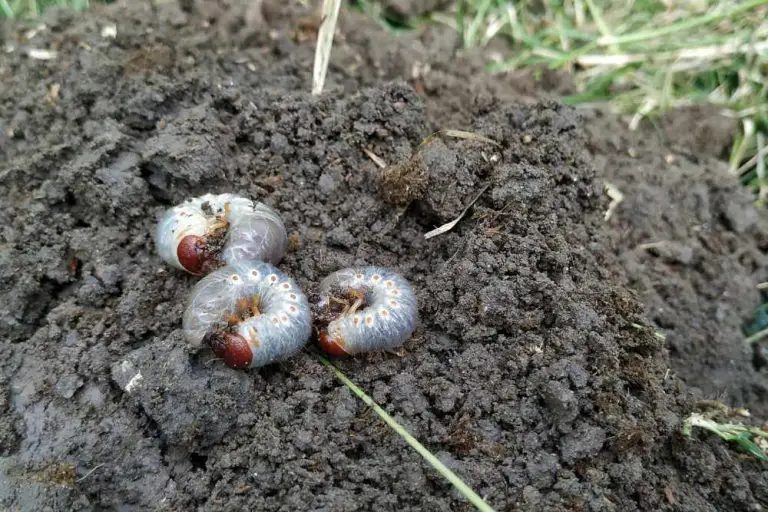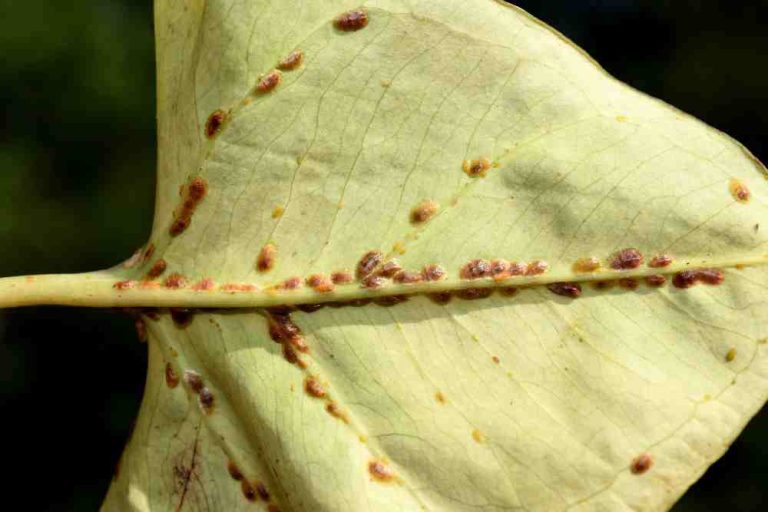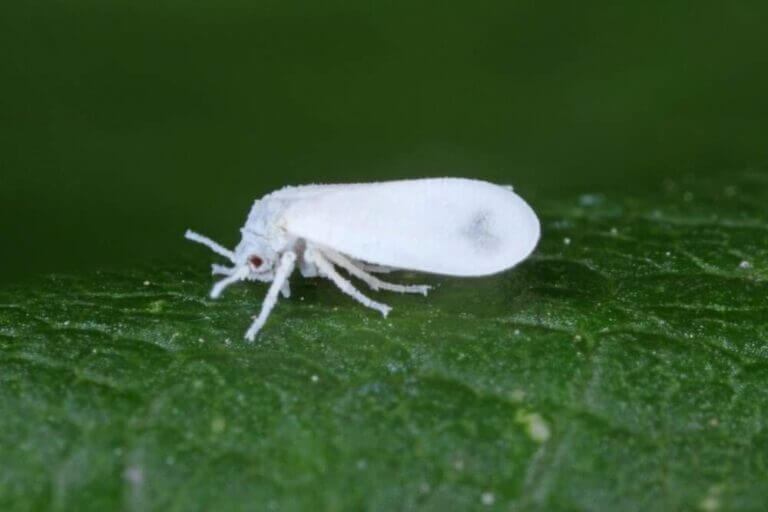Coconut Black Headed Caterpillar Life Cycle: A Comprehensive Guide
The goal of every farmer is to maintain a healthy coconut plantation all year. And who keeps appearing as baddies in the scene? Yep, the pests. Together with the well-known Rhinoceros Beetles and Red Palm Weevils, the Black Headed Caterpillar (Opisina arenosella) is a significant coconut pest that feeds on the leaf tissues, causing leaf damage.
A good management strategy is required to stop further pest infestations because the insect population would rise throughout the summer and dry weather, which is crucial in cultivating coconuts. Let’s see about coconut black headed caterpillar life cycle, their damage, and how to manage them.
The black headed caterpillar is native to South Asia, where it causes harm to several Pacific island nations that cultivate coconuts, including Bangladesh, India, Sri Lanka, and Thailand. It also causes damage in Southeast Asia, where it breeds in countries like Myanmar, Cambodia, and Vietnam.
- English name: Black Headed Caterpillar
- The scientific name of Black Headed Caterpillar: Opisina arenosella
- Order: Lepidoptera
Black Headed Caterpillar Life cycle
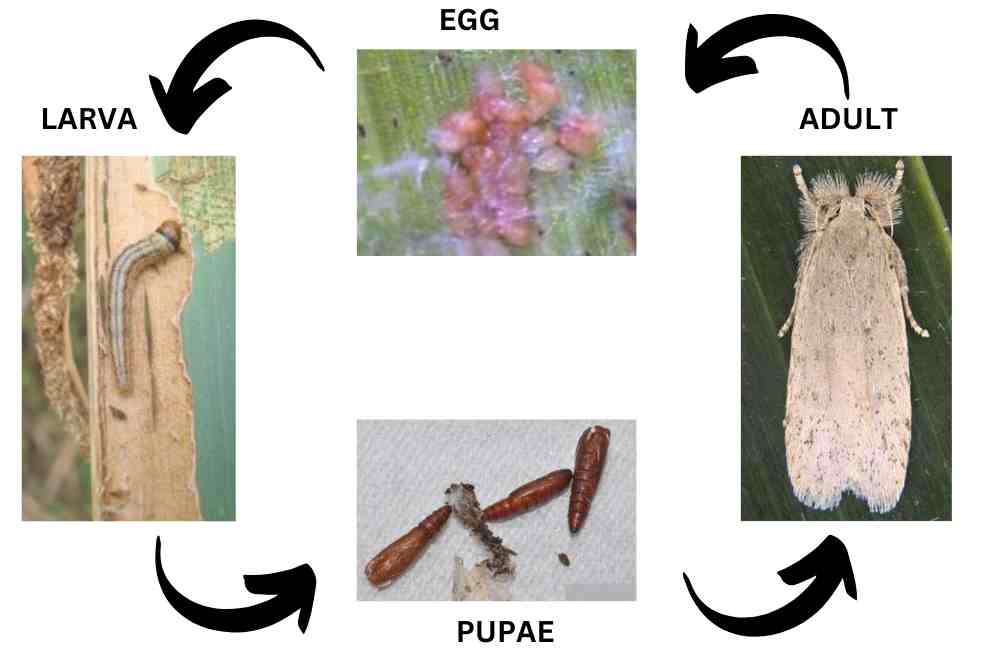
The female moth is ash gray, 10 to 15 mm long, and has a 20 to 25 mm wingspan. In 15 to 20 days, she will lay hundreds of eggs (50 to 500 eggs) on the underside of the apex of old leaves. The incubation time for newly laid eggs is 3-5 days (summer), but it can be up to 10 days. Freshly laid eggs have a light cream color before turning pink (Winter).
Larvae hatch out at 1.5 mm in length, and as they get closer to pupating, they steadily develop to 15 mm in length. After 32 to 48 days, the larvae cause harm to the lower leaves and leaf undersides. When the larva has gained enough strength, it enters the pupal stage, which is brown. After 9 to 11 days, the ash-gray moth leaves and starts a new cycle. The lifespan is approximately 2–3 months.
Host Trees Of Black Headed Caterpillar
The trees of the areca family / Palm (Palmae), such as palm, areca, rattan, and date
Black Headed Caterpillar Damage
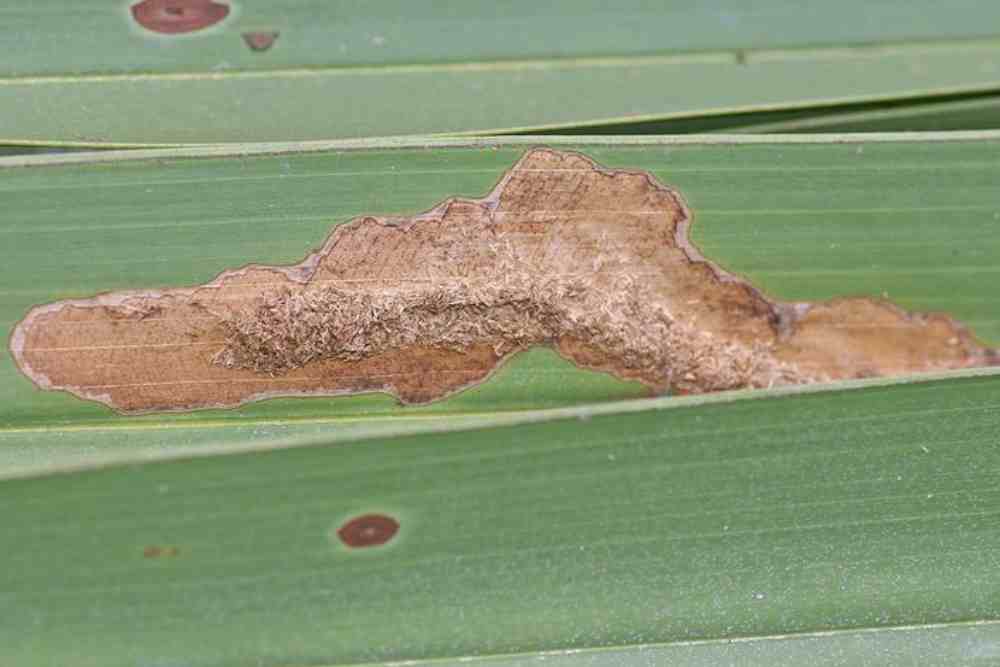
The damage is brought on by the coconut caterpillar larvae, which feed on the surface tissues of the leaflets’ undersides. The female caterpillar deposits about 130 eggs on the elder palm leaves in various groups.
The eggs hatch after five days. The 15 mm long, light green larvae with a dark brown head and reddish brown stripes are fully grown. Caterpillar attacks are identifiable by dried-up and green patches that emerge on the upper epidermis of leaves, as well as by the presence of larval silk galleries, mold, and pupal cases on the lower surfaces of leaves.
The places where surface tissues have been consumed develop brownish and become dry patches, progressively spreading throughout the leaflet. These problems often start on older leaves and then extend to younger ones. At this time, the tree loses its stability as the dry parts of the leaflets progressively break and fall away. The entire plantation has a burnt appearance during extreme weather.
As a result of damage to the branches, the tree will become weak, and its yield will decrease. Worm nests should be apparent when inspecting the underside of the leaves. The tree will die if the damage isn’t correctly handled.
Black Headed Caterpillar Management
Cultural Method
The first impacted leaves could be cut and burned as a preventative measure at the start of the summer season.
Chemical Method
Spray the underside of the fronds with quinalphos 0.05%, dichlorvos 0.02% (Dichlorovos 100EC), malathion 50 EC 0.05% (1 ml/lt), and phosalone 0.05% when the young palm trees’ infestation is quite severe and the biocontrol is not expected to be effective.
If there is a major epidemic outbreak of the insect on young plants, spray malathion 50EC 0.05% all over the underside of the leaves.
Harvest all mature nuts, drill a hole at a downward angle, inject 5.0 ml of monocrotophos 36 WSC into the stem at the height of about 1.5 M, and then fill the hole with clay mixed with copper oxychloride.
Amounts of monocrotophos should be injected into the stem according to age: 5 ml for those under ten years old and 10 ml for those over ten years old, combined with an equal amount of water (20 ml). After 45 days after treatment, harvesting the nuts or picking the tender coconuts is strictly forbidden.
Use the monocrotophos’ root feeding technique to eradicate the black headed caterpillar. Choose a live, fresh root, slice it sharply at an angle, and place it in a 7×10 cm polythene bag with the insecticidal solution containing monocrotophos 36 WSC and water. With a cotton thread, tie the bag tightly to the root. Check for absorption 24 hours later. If there is no absorption, choose a different root and repeat the process. Take the necessary precautions before applying an insecticide.
Biological Method
The larval parasitoids Elasmus nephantidis (brown species), Goniozus nephantidis, and Brachymeria nosatoi – KAU are the most efficient at eradicating pests. 1:8 of the host-parasitoid ratio is the ideal level of release.
While the pest is in its second or third instar larval stage, the parasitoid should be dispersed under the coconut trees at a rate of 3000/ha. A parasitoid release trap can be used to release the parasitoid at the feeding site.
Parasitoids should not be released in the crown region because they will be eaten by predators such as reduviid bugs and spiders. This should be discharged three weeks after the chemical spray, and this needs only to be made public three weeks after the chemical spray. To keep the pest under control over the summer, release larval (Bethylid, Braconid, and Ichneumonid) and pupal (Eulophid) parasitoids and predators regularly from January.
- 15 Ingenious Kitchen Garden Ideas to Cultivate Freshness Right at Home - April 7, 2024
- 10 Top Picks Best Plants for Open Terrarium - April 2, 2024
- 21 Easy and Cheap Walkway Ideas for a Charming Garden - March 31, 2024


